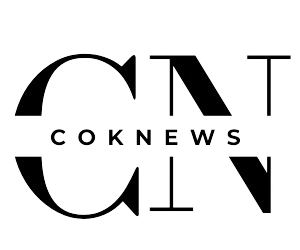When it comes to coffee, freshness plays a crucial role in its flavor and aroma. Many coffee enthusiasts often wonder if coffee can become stale even when stored in sealed packaging bags. This article explores whether coffee gets old in a sealed Coffee Packaging Bag, delving into the factors that contribute to coffee’s freshness and the efficacy of packaging in maintaining it.
Understanding Coffee Freshness
Coffee beans start to lose their freshness almost immediately after roasting. Freshly roasted coffee beans contain volatile compounds that contribute to their rich aroma and complex flavor profile. As time passes, these compounds begin to degrade, leading to a decrease in the coffee’s overall quality. The moment you roast coffee beans, you set in motion a process of oxidation, which can affect the taste and aroma.
The Role of Sealed Coffee Packaging Bag
Sealed them are designed to protect coffee from external elements such as air, light, and moisture, all of which can contribute to the degradation of coffee’s freshness. Packaging plays a significant role in preserving the quality of coffee beans. Typically, these bags are made from materials that offer a barrier to oxygen and moisture, thereby extending the shelf life of the coffee.
Barrier Properties:
High-quality are equipped with barrier layers that prevent oxygen from entering. Oxygen can accelerate the oxidation process, leading to staleness. Consequently, the better the barrier properties of the packaging, the longer the coffee will maintain its freshness.
Moisture Control:
Moisture can also adversely affect coffee. Sealed help control moisture levels by preventing any external humidity from reaching the beans. This moisture control is crucial, as excess moisture can lead to mold growth and flavor deterioration.
Light Protection:
Exposure to light, especially sunlight, can cause coffee beans to deteriorate faster. They are often designed to block out light, thus helping to preserve the integrity of the coffee beans.
The Shelf Life of Sealed Coffee
Even though sealed coffee packaging bags offer significant protection, coffee does not last indefinitely. The shelf life of coffee in sealed bags depends on several factors, including the type of coffee, the roast level, and the storage conditions.
Type of Coffee:
Different types of coffee have varying shelf lives. Whole beans generally last longer than ground coffee because they retain their freshness better. Ground coffee has a larger surface area exposed to oxygen, leading to faster degradation.
Roast Level:
Dark roasts tend to go stale quicker than lighter roasts. The roasting process affects the oil content in the beans, and darker roasts have more oils that can go rancid over time.
Storage Conditions:
The conditions under which the sealed coffee packaging is stored also affect its freshness. Ideally, coffee should be stored in a cool, dry place away from direct sunlight. Even within a sealed bag, coffee exposed to fluctuating temperatures can lose its freshness more quickly.
How Long Can Coffee Stay Fresh?
The general rule of thumb is that coffee beans can remain fresh for up to six to nine months when stored in a sealed coffee packaging bag. However, this timeframe can vary based on the aforementioned factors. After this period, the coffee may still be safe to consume but will likely experience a noticeable decline in flavor and aroma.
Whole Beans:
Whole beans maintain their freshness longer than ground coffee. Typically, whole beans remain fresh for up to nine months in sealed packaging. Beyond this period, while they may not be harmful, their taste will likely deteriorate.
Ground Coffee:
Ground coffee generally has a shorter shelf life, often up to six months. The increase surface area exposed to air accelerates the staling process. Thus, it is advisable to use ground coffee within this timeframe for the best flavor.
Reviving Stale Coffee
If you find that your coffee has become stale, there are a few ways to potentially revive it. While you cannot fully restore the original freshness, some methods can improve the flavor.
- Re-Roasting:
Lightly re-roasting stale coffee beans can help bring back some of their flavor. Be cautious not to over-roast, as this can lead to burnt flavors.
- Adding Flavors:
You can add flavorings such as spices or extracts to enhance the taste of stale coffee. While this does not restore freshness, it can mask some of the stale flavors.
- Cold Brew:
Making cold brew coffee from stale beans can also be effective. The brewing process can sometimes mellow out the stale notes and create a smoother cup.
Preventing Coffee Staleness
To prevent your coffee from becoming stale in the first place, consider these best practices:
Purchase Smaller Quantities:
Buy coffee in smaller amounts that you can consume within a few weeks. This approach reduces the time the coffee spends in storage.
Use Airtight Containers:
If you transfer coffee to a different container, ensure it is airtight. While sealed packaging bags are effective, transferring coffee to a high-quality airtight container can offer additional protection.
Store Properly:
Keep your coffee in a cool, dark place. Avoid storing it in the refrigerator or freezer, as moisture can affect the coffee’s quality.
Conclusion
In summary, sealed coffee packaging bags significantly help in preserving coffee’s freshness by protecting it from air, moisture, and light. While they are effective, coffee will eventually lose its freshness over time. Finding the right Product Packaging Solutions is essential for protecting your products, enhancing their appeal on the shelves, and meeting industry standards.




